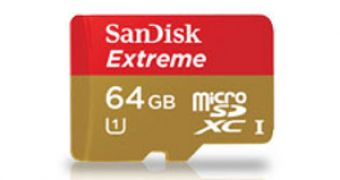One thing about NAND Flash-based storage devices is that their performance, in many cases, depends on the number of chips used in their making. Thus the individual quality of the chips rises the smaller the storage unit gets.
This is one reason why microSD memory cards can be very expensive, despite only having a fraction of the capacity of SSDs and flash drives.
Then, there are those rare wonders that have both excellent performance and high capacity, or at least a high top capacity.
The SanDisk Extreme line of microSD cards is an example, with their 16 GB – 64 GB range and maximum transfer speed of 80 MB/s.
This is all owed to the UHS-I interface standard, which pushes the cards to heights that were impossible before.
Sadly, smartphone owners will have to be ready for disappointments in case they are nursing dreams of grandeur.
The reason for that is simple: the UHS-I performance standard is not supported by most of them, since the processors don't. For example, the Samsung Galaxy S4 phone has an Exynos 5 Octa processor.
Furthermore, when tested in the Galaxy Note II, the new SanDisk card only managed 14 Mbps read speeds and 14.6 Mbps write speeds.
It's still 50-100% faster than previous-generation SanDisk 64 GB microSD cards, but one has to wonder if it is worth it to pay all that extra cash for a presumed increase in performance of several folds, only to get a mere doubling.
Sadly, we don't have the prices on hand, so we can't say. What we can say is that handset makers that don't use microSD cards at all might have just received a reason to change their policies, or so some people think.
For more information on the new “Extreme” line of SanDisk memory cards, find the product page here.

 14 DAY TRIAL //
14 DAY TRIAL //